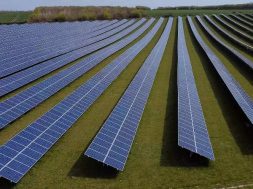
The First Ruling on Section 201 Case Released, PV Cell Price Becomes Unstable this Week: Price Trend
The first ruling on Section 201 case came out last week, and besides the loss, there isn’t any concrete result, making the changes in the cross-strait supply chains limited. Downstream demand continues to remain weak.
Polysilicon
Due to the accident and overhaul of Chinese and US polysilicon plants, it is roughly estimated that the capacity has decreased 25%-30% and that the supply is still short. However, since the downstream demand has declined at the same time, a large demand-supply gap may not appear.
Currently, the demand-supply gaps of polysilicon mainly appear in individual plants. Because the supply of polysilicon mostly comes from the plants which are under supply restrictions presently, buyers of these manufacturers have to seek the sources of polysilicon in the short-term, making part of the price go up. Overall, the price on the market remains RMB 147-149/kg, only with single increases.
Si-Wafer
The replacement of demand in diamond wire cut multi-si waferfor multi-si wafer has become obvious, putting traditional slurry wire cutting technology in a weak position. In terms of the current supply chain, where upstream price surges and downstream price drops, diamond wire cutting, which can save production cost, has quickly become the mainstream. Nevertheless, the capacity can’t meet the demand temporarily, causing diamond wire cut multi-si wafer to be in short supply. On the contrary, owing to the insufficiency of profit for traditional slurry wire cutting and the operating pressure of si-wafer and battery plants, it has become the first option to be abandoned when the demand goes down.
The mainstream price for diamond wire cut multi-si wafer now is RMB 4.7-4.75/pc; although the change of ultra high-performance multi-si wafer price is smaller, it has remained at around RMB 5.1/pc. The rapid drop of high price which results from short supply this week shows the disadvantage of traditional slurry wire cutting.
Mono-si wafer price has slightly remained flat this week. Due to the alienation by oversea demand at the beginning of Q3 and the delayed progress of “Top Runner Program” by the end of September, plus the power rationing of the leading manufacturers, mono-si wafer price has increased. Yet, during the time when diamond wire cutting is growing rapidly, mono-si wafer plants won’t increase their prices rashly.
PV cell
PV cell price isn’t stable this week. After the decrease of MIP, high performance product price has started to be cut down by clients and cross-strait PERC products has come to a new stage of competition. In the future, if the US adopts higher trade barrier, it seems that the competition of high performance product will become more intense and the speed of price decline will beyond expectation.
Though the mainstream prices of general products remain the same, there are manufacturers planning to raise the prices to deal with the high cost in silicon material. Now they are still observing the acceptance from downstream. However, under the pressure of downstream price, only diamond wire cut PV cell can be accepted successfully. There are difficulties for traditional slurry wire cut PV cell to increase the price. Currently, diamond wire cut PV cell price is RMB 1.71/W and there are still spaces for rising.
Module
Because the first ruling on Section 201 case just confirms the loss as expected, downstream market hasn’t changed much this week. Canada and Singapore may be safe, making the possibility that later prices on the US market will be lower than expected. The drive for manufacturers to sell for the US is limited. Currently, only the third manufacturer which planned to sell for the US before the middle of October still produces as scheduled. China doesn’t ship to other places under the consideration of risks. There isn’t any growth in the prices on the supply chain.
On the other hand, China is weak in pulling in, affecting the downstream price in October. The improvement of polysilicon’s shortfall from upstream may greatly influence the supply chain prices in Q4, making it possible for the bidding projects from last year and 1H17 to be promoted. The focus of Chinese market is on the time when distributed system FIT goes down.
















